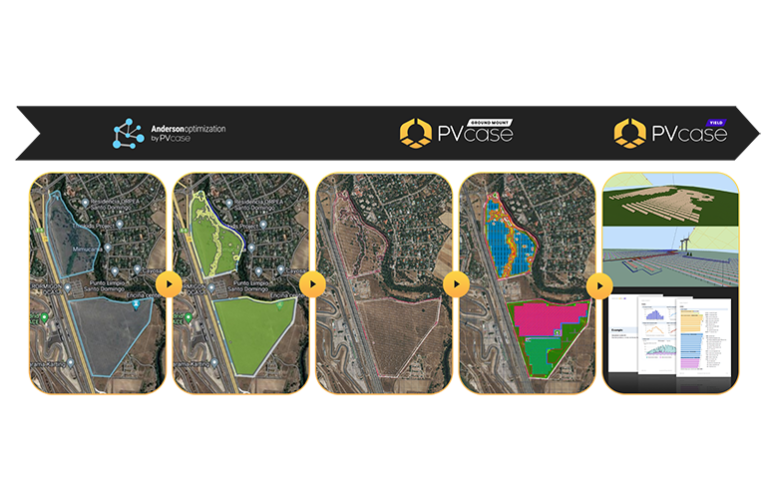Utility-scale solar projects consistently break capacity records annually, both in terms of individual project size and total national production. The sheer size of these acres and sometimes miles of arrays require an unprecedented amount of labor time to build, and even before a stake is driven into the ground, project engineers must spend time designing these systems. PV cabinet, a software-as-a-service company founded by solar engineers, has been providing design services for large-scale solar projects worldwide for the past decade. In this episode of Solar Spotlight, David Trainavicius, founder and CEO of PVcase, discusses how the platform helps solar developers automate processes and reduce labor hours, ultimately reducing the data risk that comes from sharing data among the dozens of stakeholders involved and platforms. in the development of a utility-scale solar project. .
Below is a written portion of this podcast, but be sure to listen to the full episode on your preferred podcast service.
SPW: What problem does PVcase solve in the solar market?

David Trainavicius, CEO of PVcase.
D.T: When you say problem, I would think of perhaps multiple problems. So we have been seeing this for ten years now that there is a shortage of well-trained professionals in the sector. Although solar energy is becoming quite a fashionable and popular area to study and then get started. But with the global growth of solar energy, that is still not enough. The second would be a lack of automation tools. Throughout my career in solar, I’ve always thought about how technology can change this industry and how automation can change this industry and how we can move faster because number 1: lack of talent. So I think tools can solve that – somewhat. And then the third would be that all those tools on the market are so separated from each other. There’s no one tool that connects them all, and I think that’s the big challenge we’re trying to solve.
SPW: What is PVcase and how does it solve the problems just described?
D.T: We started with this flagship product, which is a utility-scale design tool used by solar engineers, and we’ve been working with our customers over the last five, six years to develop that product in a very granular way. Now we’re changing that a little bit and becoming a little bit more of a platform, where we can start with a GIS (geographic information system) tool to first find sites, select sites and then move into the design process.
SPW: Who do you sell to and what problems do you solve for those customers?
The first group would consist of developers looking for locations to develop solar energy. So they look for suitable locations, select them and then move on to the engineering phase. The second customer base would consist of EPCs, our engineering, procurement and construction companies, along with engineering consultants, developing these utility-scale power plants.
SPW: How and when did you know that PVcase was suitable to enter the market?
D.T: When we started developing PVcase, it was at the consultancy firm I headed. Initially it was the design tool for internal use. We used it for real projects around the world. Then we started getting so many requests from our customers asking what type of software solutions we were using, and asking if they would sell that solution for them. So it was the natural path to create a spin-off of the consultancy. And so PVcase was born.
This podcast is sponsored by PVcase


